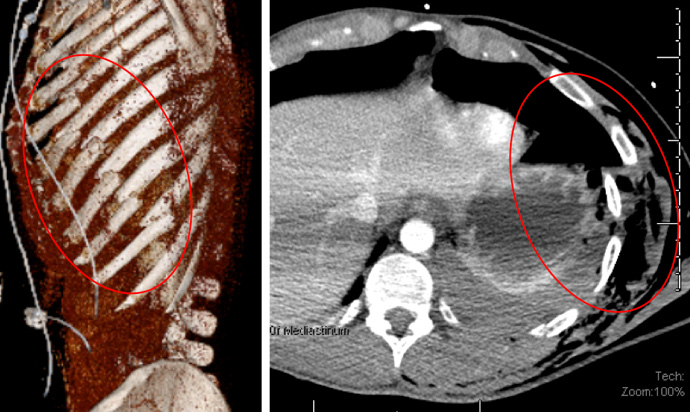

Displaced ribs treatment skin#
Clinical examination in displaced fracture can often reveal injury to the skin and open wounds in case of open fracture. A thorough clinical history and physical examination is necessary to understand the type of injury and the type of displaced fracture. These symptoms of displaced fracture too need to be considered, in view of possible complications of displaced fracture.Įvaluation of a displaced fracture and assessment of the symptoms of displaced fracture is necessary to be able to begin with appropriate first aid and treatment of displaced fracture. Loss of sensation in the area supplied by the nerve or inability to move or function the part is also a possible symptom of displaced fracture. If a displaced fracture causes impingement of nerves, it can cause numbness and tingling or burning sensation in the arms or legs or in areas nearby the fracture. If the displaced fracture causes injury to the internal parts, there may be severe pain, bleeding and other complications of the parts. This is seen in open fractures, in which the broken bone fragments protrude through the skin, causing injury and can be seen from outside. Open wounds and injury to the skin may be noticed in some cases of displaced fracture. If the upper limbs are affected in a displaced fracture, the hand movements, lifting of objects and other activities of the hand may be affected. If the lower limbs are affected, walking may be difficult, painful or not possible. Small protrusion or noticeable disfigurement is a common symptom of displaced fracture, which is usually not seen in other non-displaced types of fracture.ĭepending on the bone involved, symptoms of displaced fracture may also include inability to move the bone, inability to bear weight or hold any weight. The symptoms of displaced fracture include pain and swelling in the area of the fracture. A closed fracture in displaced fracture is a fracture in which the broken parts of the bone remain inside and the overlying skin is intact, leaving no noticeable injury to the skin.ĭisplaced fracture mainly presents with a history of injury, fall or blow to the area, which can result in breaking of the bone. Open fracture is a fracture in which the broken parts of bone cut through the skin and an open wound can be noted over the skin.

Impaction occurs when the broken parts of bone get jammed into each other, while they may remain normally aligned.Ī combination of these types of displaced fracture can also be seen, which commonly include angulation and rotation or angulation, rotation and shortening along with displacement in displaced fracture.Īnother important type of fracture includes open and closed fracture, which can also be seen as types of displaced fracture. Distraction or widening occurs when the broken parts of bone get spaced out, widened causing distraction, which increases the overall length of the bone. Distraction and impaction are also types of displaced fracture.Shortening type of displaced fracture occurs more often in an oblique fracture. Displacement and shortening fracture is noted when the broken part of bone, gets displaced and moves towards the upper part of bone, reducing the total length of the bone.If the broken part of bone forms an angle on the inner side or medial angulation, it is called varus and if the angle is on the outer side or lateral angulation, it is called valgus. An angulated fracture, this is a type of displaced fracture where the broken bone ends move from their alignment and form an angle with each other.



 0 kommentar(er)
0 kommentar(er)
